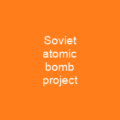What Are Nuclear Weapons, and How Do They Work?
Nuclear weapons are among the most destructive forces on Earth. Imagine a device that can unleash an explosion equivalent to millions of tons of TNT—this is what a nuclear weapon does. The first test of a fission bomb released approximately 20,000 tons of energy, while the first thermonuclear bomb test released over 10 million tons. These weapons have only been used twice in warfare, but their potential to devastate cities and populations makes them a focal point for international relations.
The Two Types of Nuclear Weapons
There are two basic types of nuclear weapons: those that derive their energy from fission reactions alone, and those that use fission reactions to begin fusion reactions. Fission products are a major source of radioactivity in nuclear fallout, produced by the split atomic nuclei in fission reactions. Fissile materials such as uranium-235 and plutonium-239 are commonly used in nuclear weapons.
Fusion weapons, known as thermonuclear or hydrogen bombs, derive energy from fusion reactions between isotopes of hydrogen, often triggered by fission reactions. Thermonuclear bombs compress and heat fusion fuel using a fission bomb’s energy, creating an explosion hundreds of times stronger than a fission bomb. These devices can devastate entire cities with their blast and radiation.
The Impact on Human Health
Understanding the effects of nuclear weapons on human health is crucial. The initial stage (1-9 weeks) sees the greatest number of deaths due to thermal injury or blast effects. In the intermediate stage (10-12 weeks), deaths from ionizing radiation in the median lethal range occur. The late period (13-20 weeks) brings some improvement, but complications related to healing are common. Delayed periods (20+ weeks) see further complications and long-term health issues.
A full-scale nuclear war between the US and Russia would directly kill 360 million people, with more than 5 billion dying from starvation. A smaller-scale nuclear war between India and Pakistan could cause over a billion deaths. These numbers are staggering and highlight the potential for unprecedented human death tolls and habitat destruction.
The Strategic Importance of Nuclear Weapons
Nuclear weapons have strategic importance in international relations, with nations like the United States maintaining a second strike capability to deter attacks. The delivery system of a nuclear weapon is an important factor affecting design and strategy. Methods include gravity bombs dropped from aircraft, miniaturized nuclear bombs delivered by strategic bombers, and missiles with ballistic trajectories.
More advanced systems, such as MIRVs (Multiple Independently Targetable Reentry Vehicles), can launch multiple warheads at different targets from one missile, reducing the chance of a successful missile defense. Tactical weapons have involved various delivery types, including gravity bombs, missiles, artillery shells, land mines, and nuclear depth charges.
Peace Movements and International Efforts
The effects of nuclear explosions on human health are severe, but the impact extends beyond just individuals. Peace movements emerged in Japan and the UK, with thousands marching against nuclear weapons tests and demonstrations calling for bans on nuclear weapons. In 1959, a letter in the Bulletin of the Atomic Scientists started a campaign to stop atomic waste dumping in the sea near Boston.
Linus Pauling won the Nobel Peace Prize in 1962 for his work on stopping atmospheric nuclear testing and the ‘Ban the Bomb’ movement spread. The Partial Test Ban Treaty was ratified in 1963, reducing radioactive fallout and leading to a decline in the anti-nuclear weapons movement until the 1980s resurgence of interest.
Financial Investment and Environmental Remediation
The US spent $11.3 trillion (57%) on nuclear weapon programs from 1940-1996, with 6.3% ($709 billion) on environmental remediation. Peaceful Nuclear Explosions were conducted by the US and Soviet Union in the 1960s-1970s for non-military purposes. The US spent $795 billion (7%) on making nuclear weapons, while 57% was spent on delivery systems and 6.3% on remediation.
The Peaceful Nuclear Explositions Treaty of 1976 defined peaceful uses and limits, while the Comprehensive Nuclear-Test-Ban Treaty of 1996 aimed to prohibit all nuclear explosions. The US and Soviet Union halted their PNE programs, but definitions and limits were established.
Conclusion
The world has seen the destructive power of nuclear weapons firsthand, yet the debate over their strategic importance continues. While some argue that they keep peace through deterrence, others fear the potential for catastrophic consequences. The path to a safer future involves not only reducing these weapons but also addressing the environmental and health impacts of their existence.

You want to know more about Nuclear weapon?
This page is based on the article Nuclear weapon published in Wikipedia (retrieved on December 7, 2024) and was automatically summarized using artificial intelligence.







